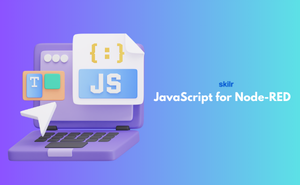👇 CELEBRATE CLOUD SECURITY DAY 👇
00
HOURS
00
MINUTES
00
SECONDS

The certification in JavaScript for Node-RED helps learners understand how JavaScript enhances the capabilities of Node-RED. While Node-RED provides a visual way to link different services and devices, JavaScript allows developers to add personalized functions and logic within these flows. This means you can move from just connecting blocks to creating smarter, customized solutions.
With this skill, learners gain the ability to manage data, automate workflows, and expand Node-RED projects for IoT and enterprise-level use. It enables them to design efficient systems that can scale and adapt to different needs, making JavaScript for Node-RED a key skill in modern automation and smart technology development.
This exam is ideal for:
Domain 1 - Introduction to Node-RED and JavaScript
Domain 2 - JavaScript Fundamentals Refresher
Domain 3 - Using JavaScript in Node-RED
Domain 4 - Working with Data
Domain 5 - APIs and Integrations
Domain 6 - IoT with JavaScript and Node-RED
Domain 7 - Custom Node Development
Domain 8 - Debugging and Optimization
Industry-endorsed certificates to strengthen your career profile.
Start learning immediately with digital materials, no delays.
Practice until you’re fully confident, at no additional charge.
Study anytime, anywhere, on laptop, tablet, or smartphone.
Courses and practice exams developed by qualified professionals.
Support available round the clock whenever you need help.
Easy-to-follow content with practice exams and assessments.
Join a global community of professionals advancing their skills.
Yes, projects like smart home automation and dashboards are included.
Definitely, as many businesses seek Node-RED experts for IoT and automation projects.
Yes, it includes debugging tools and best practices.
With IoT and automation rapidly growing, JavaScript for Node-RED will remain in high demand across industries.
Yes, at least basic JavaScript knowledge is required.
It connects devices, APIs, and services using a flow-based visual interface.
JavaScript adds flexibility, custom logic, and advanced functionality to flows.
Yes, it provides a practical starting point for IoT development.
Smart homes, manufacturing, IT automation, and energy systems.
Yes, it covers integrating external APIs with Node-RED.
While Node-RED is not a full backend framework, it does cover server-side integrations.
Developers, IoT enthusiasts, and automation engineers interested in Node-RED.
Yes, JavaScript allows you to extend Node-RED by writing custom nodes.
IoT developer, automation engineer, embedded systems programmer, and similar roles.
No, it’s also useful for data integration, API orchestration, and business workflows.